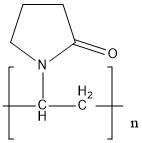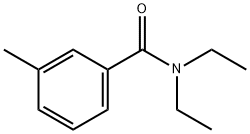Eucalyptus maculata citriodora, ext.
- CAS NO.:85203-56-1
- Empirical Formula: C10H18O
- Molecular Weight: 0
- MDL number: MFCD00146880
- EINECS: 286-249-8
- Update Date: 2024-11-14 20:10:21
What is Eucalyptus maculata citriodora, ext.?
Chemical properties
E. citriodora oil is obtained by steam distillation of leaves and terminal
branches of E. citriodora Hook (lemon-scented gum). It is an almost
colorless, pale yellow, or greenish-yellow liquid with a citronellal-like odor.
d2020 0.860–0.870; n20D 1.4500–1.4560; α20D ?1 ° to +3 °; content of carbonyl compounds calculated as citronellal: min. 70%; content of citronellal by GC: min. 75%.
In addition to the main component, rac-citronellal, the oil contains citronellol
and isopulegol (5–10% each).
Young E. citriodora trees that are grown exclusively for essential oil production
are cut back to a height of 1–1.50m and develop into shrubs.The leaves
can be harvested throughout the year; more than 200 kg of oil can be obtained per hectare.
Worldwide production of E. citriodora oil amounts to ~1000 t/yr.Themain
producers are China and Brazil. Smaller quantities come from India, Vietnam,
and Paraguay. In Brazil, the oil is a by-product of commercial forestry; E. citriodora
wood serves as an energy source for steel production. E. citriodora oil
is a starting material for the manufacture of citronellal and products derived
from it. It is also used in perfumery for the same purposes as citronellal.
Properties of Eucalyptus maculata citriodora, ext.
| Boiling point: | 93℃[at 101 325 Pa] |
| Density | 0.866 g/mL at 25 °C |
| vapor pressure | 47.5-2600Pa at 25℃ |
| refractive index | n20/D1.455 |
| Flash point: | 57℃ |
| Odor | citronellal |
| Water Solubility | 88mg/L at 25℃ |
Safety information for Eucalyptus maculata citriodora, ext.
| Signal word | Warning |
| Pictogram(s) |
 Flame Flammables GHS02  Exclamation Mark Irritant GHS07 |
| GHS Hazard Statements |
H226:Flammable liquids H315:Skin corrosion/irritation |
Computed Descriptors for Eucalyptus maculata citriodora, ext.
New Products
Tert-butyl bis(2-chloroethyl)carbamate (S)-3-Aminobutanenitrile hydrochloride N-Boc-D-alaninol N-BOC-D/L-ALANINOL N-octanoyl benzotriazole 3,4-Dibenzyloxybenzaldehyde 4-Hydrazinobenzoic acid 1,1’-CARBONYLDIIMIDAZOLE R-2-BENZYLOXY PROPIONIC ACID 4-HYDROXY BENZYL ALCOHOL 1,1’-CARBONYLDI (1,2-4 TRIAZOLE) 3-NITRO-2-METHYL ANILINE (2-Hydroxyphenyl)acetonitrile 4-Bromopyrazole 5-BROMO-2CYANO PYRIDINE 5,6-Dimethoxyindanone 5-broMo-2-chloro-N-cyclopentylpyriMidin-4-aMine 2-(Cyanocyclohexyl)acetic acid 4-methoxy-3,5-dinitropyridine 2-aminopropyl benzoate hydrochloride 1-(4-(aminomethyl)benzyl)urea hydrochloride tert-butyl 4- (ureidomethyl)benzylcarbamate diethyl 2-(2-((tertbutoxycarbonyl)amino) ethyl)malonate Ethyl-2-chloro((4-methoxyphenyl)hydrazono)acetateRelated products of tetrahydrofuran








You may like
-
 873-83-6 6-Aminouracil (or) 4-Amino-2,6- dihydroxypyrimidine, (or) 6-Amino2,4-pyrimidinediol 99%View Details
873-83-6 6-Aminouracil (or) 4-Amino-2,6- dihydroxypyrimidine, (or) 6-Amino2,4-pyrimidinediol 99%View Details
873-83-6 -
 55441-95-7 99%View Details
55441-95-7 99%View Details
55441-95-7 -
 N-Vinylformamide 99%View Details
N-Vinylformamide 99%View Details
13162-05-5 -
 Chloro Uracil 1820-81-1 99%View Details
Chloro Uracil 1820-81-1 99%View Details
1820-81-1 -
 207557-35-5 99%View Details
207557-35-5 99%View Details
207557-35-5 -
 2-ethyl-6-methyl-3-hydroxypyridine succinate 99%View Details
2-ethyl-6-methyl-3-hydroxypyridine succinate 99%View Details
127464-43-1 -
 2-ETHYLPYRIDINE 100-71-0 99%View Details
2-ETHYLPYRIDINE 100-71-0 99%View Details
100-71-0 -
 181228-33-1 (S)-Methyl 3-amino-2-((tert-butoxycarbonyl)amino)propanote Hydrochloride (DAP-OMe. HCl) 99%View Details
181228-33-1 (S)-Methyl 3-amino-2-((tert-butoxycarbonyl)amino)propanote Hydrochloride (DAP-OMe. HCl) 99%View Details
181228-33-1